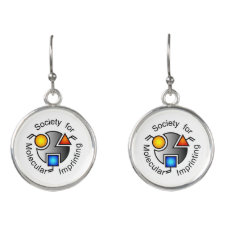
Authors: Ma JX, Lian ZR, He C, Wang JT, Yu RC
Article Title: Application of novel quantum dot-based molecularly imprinted fluorescence sensor in rapid detection.
Publication date: 2021
Journal: Chinese Journal of Chromatography
Volume: 39
Issue: (8)
Page numbers: 775-780.
DOI: 10.3724/SP.J.1123.2021.02025
Alternative URL: https://www.chrom-china.com/EN/10.3724/SP.J.1123.2021.02025
Abstract: A critical need in analytical chemistry is the efficient fabrication of selective and sensitive sensors to detect trace analytes in complicated samples. In recent years, fluorescence analysis has been widely used in environmental research and the life sciences due to its high sensitivity and simple operation. Quantum dots (QDs) are a new type of fluorescent nanomaterials. Owing to the quantum confinement effect, QDs possess excellent optical properties such as strong anti-bleaching ability, a narrow excitation and emission band, and tunable emission wavelength. As a hot labeling material, QDs are suitable for use in surface-modified analytical sensors employed in fields such as analytical chemistry, biology, and medicine. However, QD materials have a notable disadvantage, in that the actual sample matrix may contain some interferents with luminescent responses similar to those of the target; this decreases the selective ability of the fluorescence sensor. The surface modification of QDs via the molecular imprinting technique (MIT) is a promising solution to overcome this drawback. Molecularly imprinted polymers (MIPs) are a kind of "bionic" material that can carry out specific recognition and selective adsorption and hence, possess the unique properties of recognition specificity, structural predictability, good reproducibility, and excellent stability. Accordingly, MIPs have been widely employed in sensors as well as for drug delivery, catalysis, and solid phase extraction. Notably, QD-based molecularly imprinted fluorescence sensors combine the advantages of QDs and the MIT. Owing to their specific selectivity and high sensitivity, such sensors have been extensively developed for environmental monitoring, food detection, and biological analysis. However, there remain challenges associated with the preparation and application of the sensors: (i) single recognition: it is important to develop a composite sensor that can detect multiple target analytes from the actual samples at the same time during practical application; (ii) poor hydrophilicity: the actual sample is usually a liquid matrix; hence, it is imperative to determine an approach for improving the hydrophilicity of the sensor; (iii) the accuracy of fluorescence response and the resolution of visual detection need to be further improved; (iv) imprinting: it remains challenging to imprint biological macromolecules, viruses, and bacteria. Thus far, many researchers have made progress with regard to the preparation and application of the sensors. Accordingly, this work reviews approximately 20 papers published by the American Chemical Society, Elsevier, and other databases in the last five years to highlight progress in novel preparation methods and practical applications of QD-based molecularly imprinted fluorescence sensors for the sensitive analysis and rapid detection of trace substances. First, according to the different numbers of emission peaks in the fluorescence spectrum, three kinds of QD-based molecularly imprinted fluorescence sensors are introduced and the related recognition mechanisms are explained. Second, according to the different substances to be detected, this mini-review summarizes the latest research progress in sensors for the detection of ions, organic small molecules, biological macromolecules, as well as for the analysis of bacteria and viruses. Finally, existing challenges associated with the preparation and application of the sensors, as well as future development trends, are discussed
Template and target information: review - MIPs with quantum dots
Author keywords: Quantum Dots (QDs), Molecular imprinting technology (MIT), Fluorescence sensor, rapid detection, trace analysis



Join the Society for Molecular Imprinting

New items RSS feed
Sign-up for e-mail updates:
Choose between receiving an occasional newsletter or more frequent e-mail alerts.
Click here to go to the sign-up page.
Is your name elemental or peptidic? Enter your name and find out by clicking either of the buttons below!
Other products you may like:
 MIPdatabase
MIPdatabase









